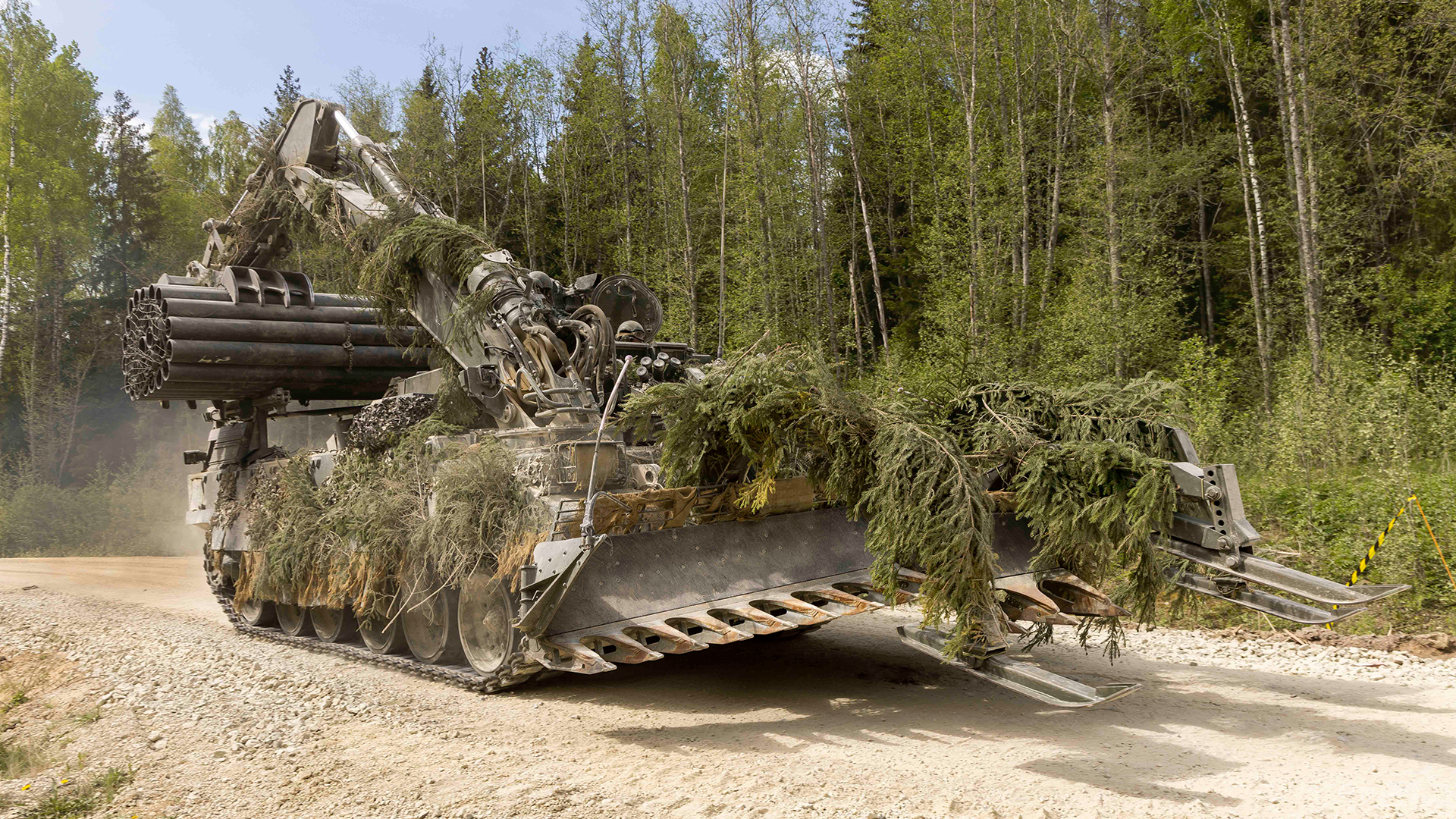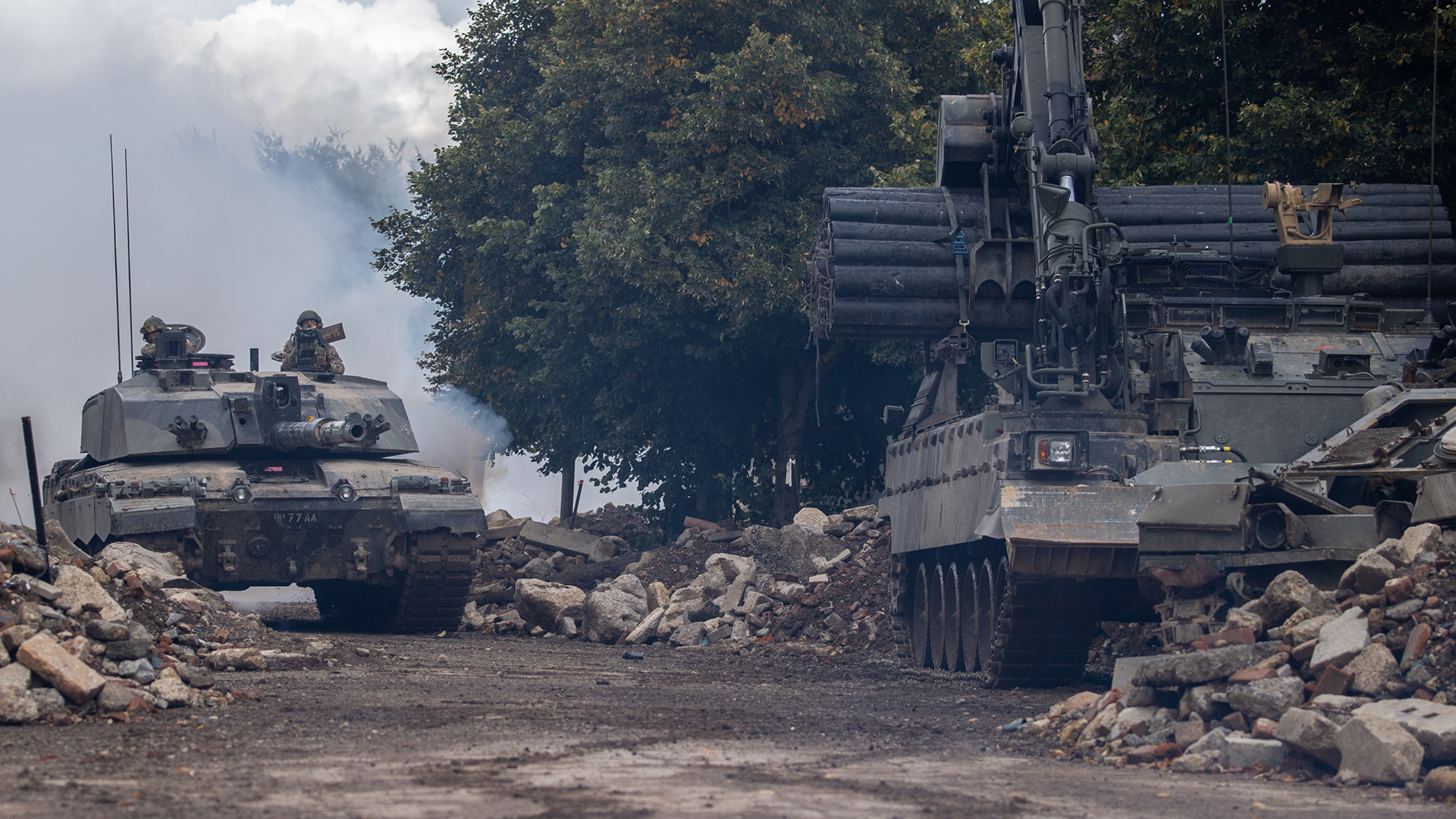Minefields no challenge for the Challenger 2 – thanks to the British Army's Trojan
Main battle tanks like the Challenger 2 rely on a combination of firepower, mobility and protection – all of which a potential enemy is well aware.
To slow down or halt the advance, the enemy can create anti-tank ditches and lay minefields – and even if the tanks avoid the mines they can end up being channelled into a kill zone where they can be targeted by artillery.
And that's where the British Army's Trojan armoured engineer vehicle comes in.
This vehicle is designed to open routes through complex battlefield obstacles and clear a path through minefields.
The Trojan Armoured Vehicle Royal Engineers is a combat engineering vehicle that was designed as a replacement for the Chieftain AVRE – the ChAVRE.
The Trojan is based on the chassis of the Challenger 2 it's designed to support, and is powered by the same Perkins CV12 diesel engine.

Its standard equipment includes a dozer blade, mine plough and an excavator arm, and a mine-marking system can also be fitted.
It can also carry fascines – a bundle of pipes that are dropped into a ditch, filling the gap so it can then be driven over.
The Trojan can also tow a trailer-mounted, rocket-propelled, mine-clearing system.
Although it has no turret – the Trojan is not a tank – all this dedicated kit gives it a combat weight of 62.5 tonnes, but it can nevertheless achieve a top speed of 59km/h.
Improved visibility is achieved by incorporating direct and indirect vision devices with low-light, image-intensifying and thermal imaging capabilities. It also has a CBRN protection system.

Because it can free up an armoured advance, the Trojan is considered a high-value target. It has some means of protection, being armed with the 7.62mm belt-fed L7A2 GPMG.
But it relies on the very vehicle it's there to support – the Challenger 2 – to protect it against threats such as enemy armour.
While it was designed for the battlefield, the Trojan has the flexibility to support a wide range of operations, including humanitarian missions.









